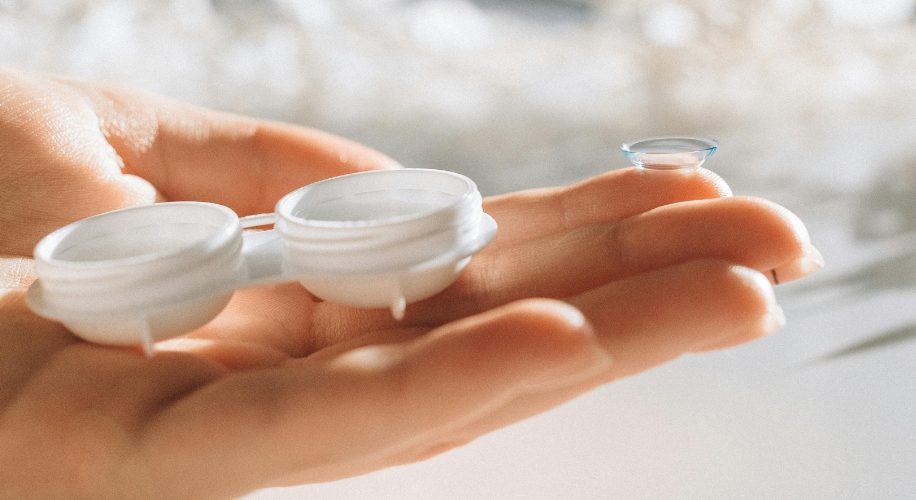Understanding the Different Types of Contact Lenses
- BY Ivan Yong
- IN Contact Lenses
Contact lenses provide a convenient and stylish alternative to glasses, offering clear vision without the bulk. With various types of contact lenses available, choosing the right one can feel overwhelming. Today, we’ll go over the most common types of contact lenses.
Photo by Andrea Piacquadio
1. Soft Contact Lenses
Soft contact lenses are the most commonly used type, made from flexible materials that allow oxygen to reach the cornea. They are comfortable and easy to adapt to, making them a popular choice for first-time users.
Daily Disposable Lenses
Daily disposable lenses are designed for single-use. You wear them for a day and then toss them out at night. This option is perfect for those who prioritize convenience and hygiene, as there’s no need for cleaning solutions. Daily disposables are also great for people with allergies, as fresh lenses each day reduce the accumulation of allergens.
Biweekly Lenses
Biweekly lenses are intended for reusable wear over a two-week period. You can wear them during the day and remove them at night for cleaning and storage. This option strikes a balance between convenience and affordability. Biweekly lenses often come with various prescription options and can provide comfort for those who prefer not to use daily disposables.
Monthly Lenses
Monthly lenses are designed for a full month of reuse, provided they are properly cleaned and stored each night. This option requires a bit more maintenance, but it’s often more economical than daily disposables. Monthly lenses offer flexibility for various prescriptions, making them suitable for those with different vision needs.
2. Toric Lenses
Toric lenses are specifically designed for individuals with astigmatism. They feature different optical powers in different meridians of the lens to correct the uneven curvature of the cornea, ensuring clear vision. Toric lenses come in various wearing schedules, including daily disposable, biweekly, and monthly options, making them versatile for different lifestyles.
Photo by Nataliya Vaitkevich
3. Contact Lenses for Presbyopia
As we age, many individuals experience presbyopia, a condition where the eye’s lens loses elasticity, making it difficult to focus on close objects. There are specific contact lens options to address this common issue.
Multifocal lenses have multiple prescriptions within the same lens, allowing wearers to see clearly at various distances—far, intermediate, and near. They mimic the natural lens of the eye and are designed to provide seamless transitions between different focal points.
4. Color Contact Lenses
Color contact lenses can enhance or transform the natural color of your eyes, available in both prescription and non-prescription forms. These lenses can subtly boost your natural eye color to provide a mild enhancement for everyday wear, or completely change your eye color to make a bold fashion statement.
5. Specialty Contact Lenses
For individuals with specific vision needs, specialty contact lenses can offer tailored solutions.
Rigid Gas Permeable (RGP) Lenses
RGP lenses, made from firm plastic, offer clear vision and durability. Rigid contact lenses often provide better vision quality, especially for those with astigmatism, and can be tailored to fit the unique shape of your eyes. However, some patients find RGP lenses to be uncomfortable and there is a longer adaptation period compared to soft contact lenses.
Scleral Lenses
Scleral lenses are larger and vault over the cornea, resting on the sclera (the white part of the eye). They are ideal for conditions like keratoconus and severe dry eye, providing both comfort and enhanced vision.
Orthokeratology (Ortho-K) Lenses
Ortho-K lenses are worn overnight to reshape the cornea, allowing for clear daytime vision without lenses or glasses. This option is particularly popular among children and teens experiencing myopia progression.
Photo by Andrea Piacquadio
Conclusion
Choosing the right type of contact lens is essential for your comfort and vision. By understanding the different options, you can select the best fit for your lifestyle. Always consult with your eye care professional to determine the most suitable lenses for your vision needs.




